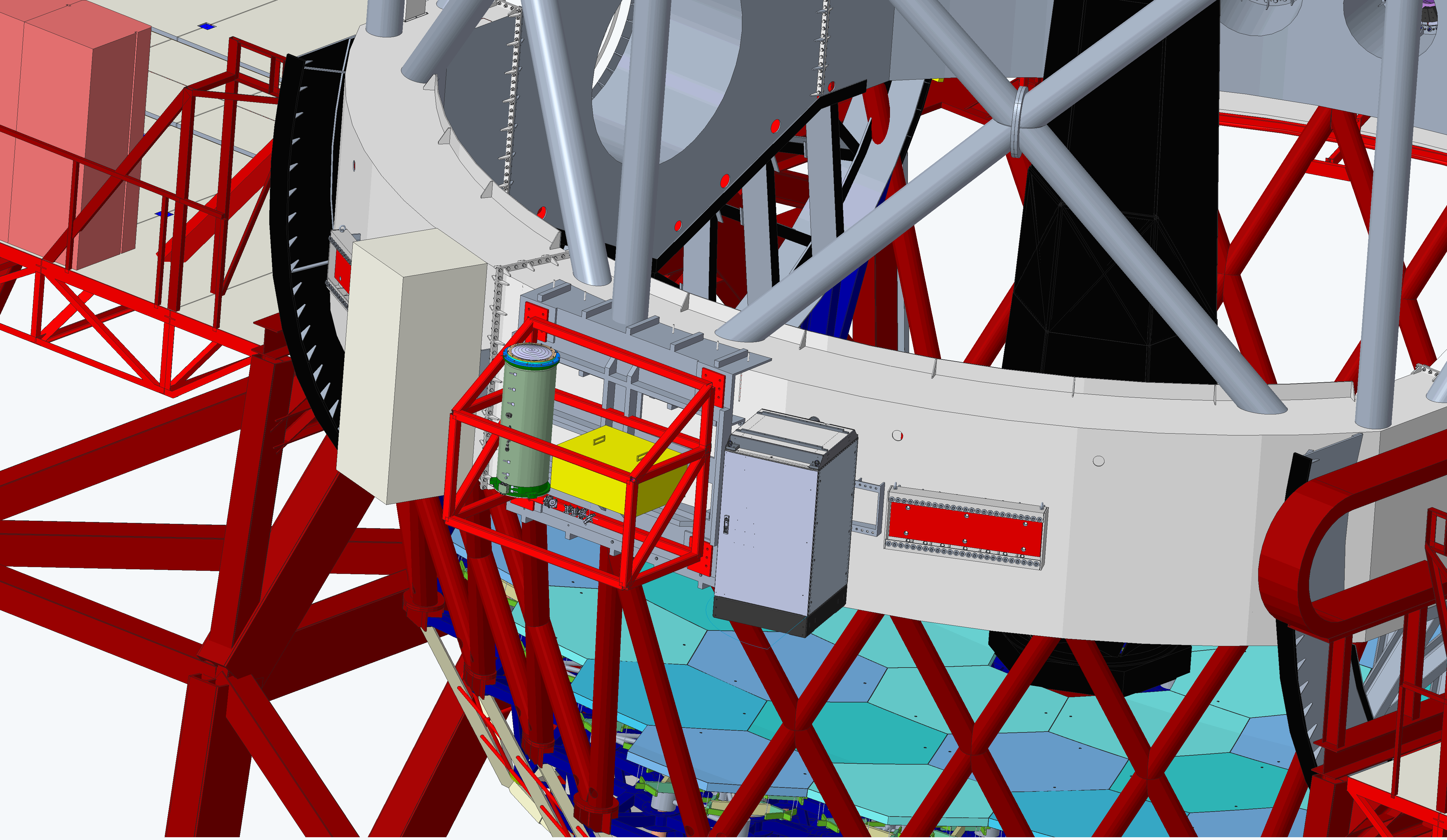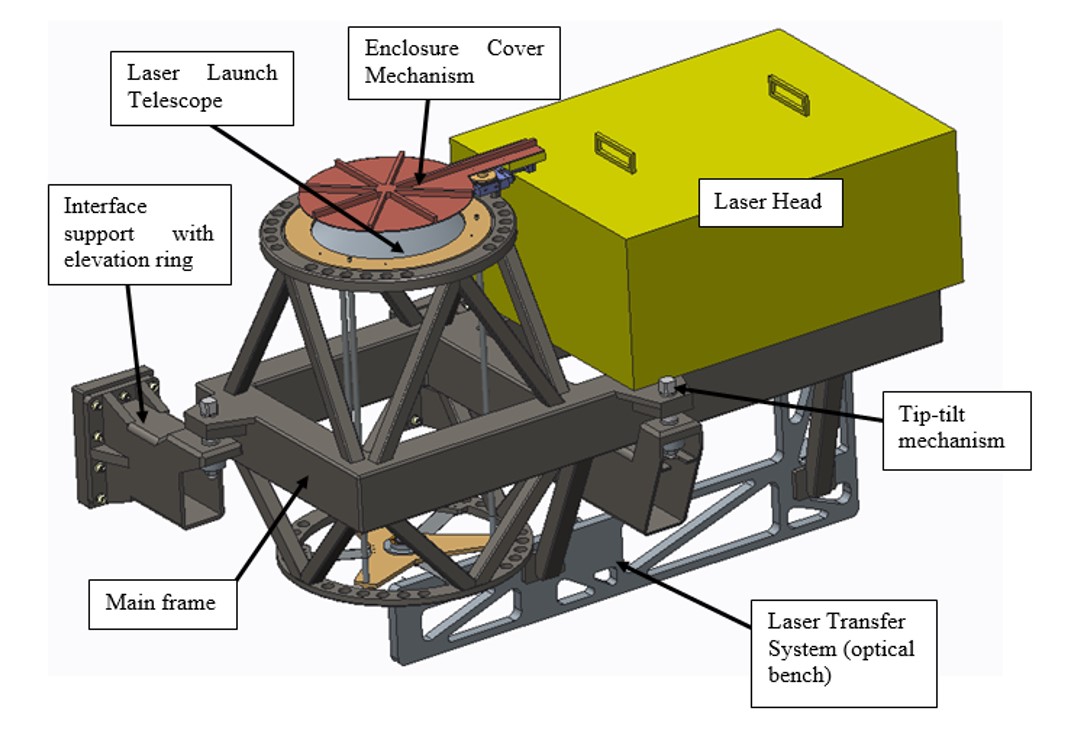Extension to LGS
The use of AO systems is limited to those areas in the sky where there are bright natural guide stars to be used as reference for turbulence measurement. The laser guide stars (LGS) are used to extend the coverage of an AO system to almost the whole sky, even in areas where there is not a natural bright star. Developing a LGS system for GTCAO extends the use of the system to almost any possible scientific object, to most of the sky and to any high resolution scientific program, making the investment in the telescope much more profitable both economically and scientifically.
The main systems of the LGS are: the laser system, the laser transfer optics, the laser launch telescope, the laser wavefront sensor, the security system, the laser launch structure, and the control system (both electronic hardware and control software).
The laser system is the core of LGS, a laser that emits at the wavelength of sodium (589 nm), to stimulate the sodium atoms in the upper atmosphere and thus creating the artificial star at 90 km. The purpose of laser transfer optics is to provide adequate divergence for the laser, to keep it stable and to guide it to the launch telescope. The launch telescope is a small telescope that is mounted on the main telescope (in GTC) and whose function is to control the propagation of the laser to the upper atmosphere to generate the artificial star with the highest possible quality.
The laser wavefront sensor is responsible for measuring the effect of atmospheric turbulence on the light received from the artificial laser star. To mitigate the risks of operating with high-power lasers and to comply with safety regulations, the laser installation requires a special safety system. Finally, the control system includes all the electronic components necessary to control the different subsystems and synchronize them with the telescope, as well as the software for the operation.
The analysis and conceptual design of the LGS for the GTCAO was carried out in 2017. The conceptual design underwent an external review in June 2017. After completing the analysis according to the conclusions of the review, the GTC responsibles have selected the option to launch the laser generated by the LGS, from the GTC elevation ring.

3D model view of the LGS Launch System at the elevation ring of GTC
During 2018 the preliminary design of the LGS has been developed. The procurement of the laser system was completed in 2019, and the laser is available and functional at the IAC. On may 2019 the review of the preliminary design, PDR, was carried out, giving way to the detailed design, manufacture and supply of most of the subsystems. The concept is sketched in next figure.

